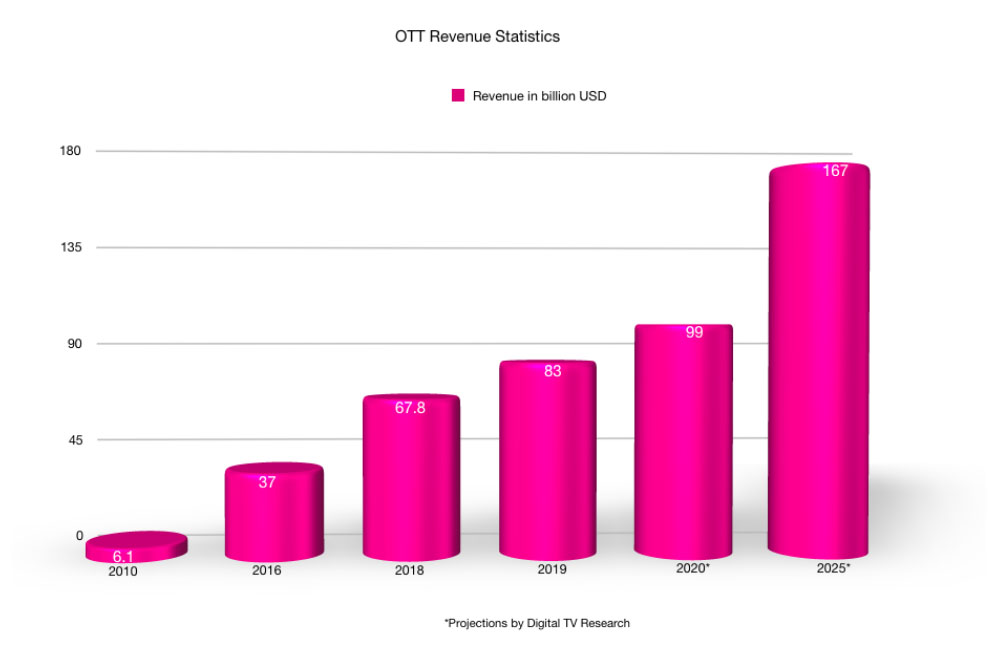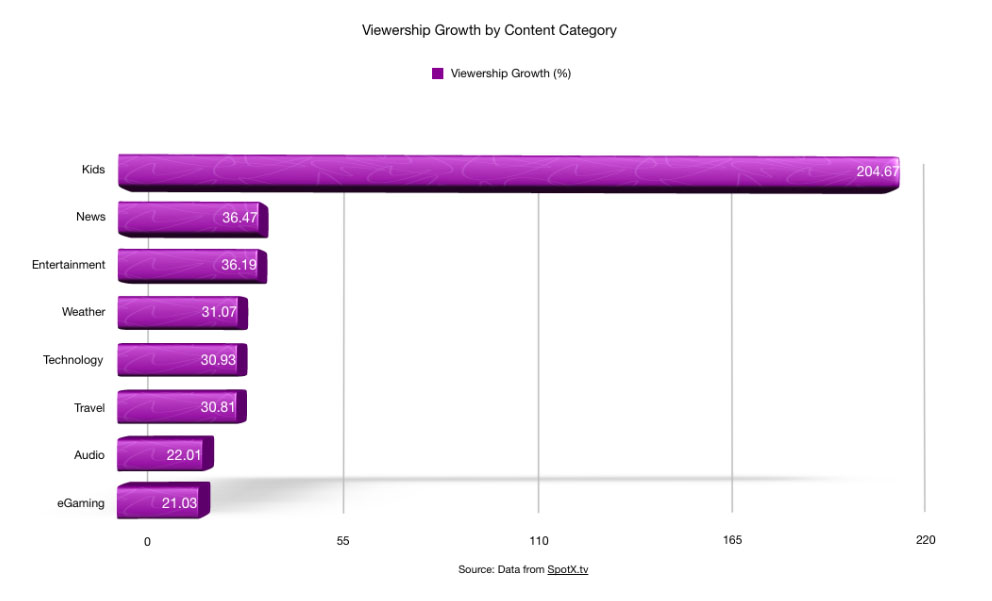Industry pundits and analysts may have been declaring the age of on-demand video streaming for a while now. But it took a pandemic for the age to truly arrive.
Sure, the internet revolution drove the popularity of over-the-top (OTT) services in recent years, and the greater convenience offered by these platforms is worthy of recognition. Streaming services made it easier for consumers to access videos from any device – from mobile phones and tablets to computers and smart TVs. And another important consideration has been the low pricing plans offered by OTT platforms. But in 2020, we’ve seen adoption like never before.
When discussing the spectacular growth of OTT platforms, a classic example here is that of Netflix, which started in 1997 as a library of nearly 900 rental titles. By 2013, it had begun producing original programs, and the year marked a massive growth in subscribers. Four years after, Netflix’s subscriber count had surpassed the total number of cable TV subscribers in the United States, reflecting a spectacular trajectory in its growth. The example provides a template for how many other OTT platforms have charted their own growth trajectories and seen meteoric rises in their subscriber counts.
Producing originals has provided considerable opportunities to platforms as it has helped build a wider subscriber base. This has also created an opening to bring fantasy franchises to the OTT screen. The Witcher, for instance, a fantasy drama series, became the highest rated Netflix Original series within five days of its release.
How will this technology’s trajectory look going forward? Let’s take a closer look.
Media and Entertainment During a Pandemic
According to data from Digital TV Research, OTT revenue had been seeing consistent growth over the past decade. While the actual figures for 2020 will only be available at the end of the year, it appears that the lockdown and the consequent changes in consumer behavior and lifestyle has definitely resulted in higher revenues.

With the global pandemic resulting in lockdowns and work-from-home routines, the consumption of content on OTT platforms has surged, even as box office and traditional media have suffered. Netflix saw its stock prices surge as subscribers increased. According to a June 2020 report by SG Analytics, the rise in consumption was a massive 134 percent.
As the pandemic has forced people to remain inside their homes and schools have remained closed, some of the highest growth has been observed in kids’ content. Naturally, animated films and family content have also continued to be popular. Moreover, as many many cancelled their newspaper subscriptions, online news content became even more popular. Considering that new content was not being produced and sports events too had been cancelled during the lockdown, popularising old classics has also been a great way to engage audiences. Take the United States. Based on data provided by Parrot Analytics, the Observer reported that SpongeBob SquarePants was the most in-demand title in the US at one point during the pandemic. On the other hand, Tiger King and Ozark were the most popular TV shows on Netflix US during the past three months.

Opportunities and Challenges
The high demand for streaming services and the immense potential for market growth has opened up a world of opportunities for the OTT entertainment industry. In March 2020, the streaming service of the Star network, Hotstar, was rebranded as Disney+ Hotstar and finally launched in early April 2020 The partnership has added several Disney brands such as Marvel Cinematic Universe, Pixar, Star Wars, and National Geographic to its array of content.
Meanwhile, HBO has come forward with its own new and bigger streaming app called HBO Max. With an initial launch in the United States this summer, while localized versions are set to launch in other regions by 2021.Due to the pandemic, Warner Brothers, a parent company of HBO Max seeks to rely on the OTT platform to release movies. However, plans for an India launch are distant but if and when it does launch in India, there will be competition from India’s OTT market in addition to American rivals. Between March and July 2020, India has seen a 30% rise in the number of paid subscribers on OTT platforms.
Despite the great leaps made by global OTT giants, they still face stiff competition from local players such as Zee5, Voot, and SonyLiv. Moreover, nearly 90% of consumers prefer watching content in regional languages. Therefore, broadcasters such as Zee5, Voot, ALTBalaji and Eros Now are investing heavily in creating original content in regional languages.
The rise in subscribers and overall consumption has also led to some common challenges for OTT platforms. One of these is the bottleneck effect. Internet limitations have been creating bottlenecks and bandwidth choke points have necessitated the need for better solutions such as dynamic adaptive screening over DASH or HTTP. There is also a need for more processing power because OTT platforms need to deliver high-resolution content which needs to be compressed. Doing so requires more fiber capacity which further comes with a demand for more energy. Therefore, in order to continue delivering the best experience to the ever-increasing subscribers, OTT platforms need to address these challenges too.
Partnerships with telecom companies such as Airtel and Vodafone offerings of Amazon Prime and Netflix subscriptions, along with certain plans has also served as an interesting model to expand the customer base. Reliance Jio has a number of data plans that offer Disney+Hotstar VIP subscriptions as well. In addition to this, Jio has a postpaid plan that comes with a Netflix offer. ALTBalaji is yet another OTT service that is available with some Airtel Broadband and Jio plans.
The Road Ahead
While recent months have seen some OTT movie releases, such as Enola Holmes on Netflix and Dil Bechara on Disney+ Hotstar, it appears far from being the norm. As cinema halls gear up to reopen, theatrical releases may be on the cards in the coming months. However, since at least some of the lifestyle shifts are here to stay, we can expect some of these effects to be residual.
Tech advances such as the shift to 5G and immersive technology would further reinforce public interest in online streaming. Other avenues, such as eGaming and online education, can also provide opportunities for OTT services to expand their base.
OTT services have exhibited one of the most impressive growth curves in recent times and the pandemic has only accelerated this growth. All trends point towards a brighter future for the on-demand video streaming industry.

Vivek Prasad
Vivek Prasad- Vivek is a Executive Director of Avalon with two decades of experience in strategy and performance improvement across various industries, including automotive, capital goods, engineering, media, and education. As a senior management team member at Avalon, he specializes in strategy development and implementation, as well as performance improvement. Vivek primarily advises clients in manufacturing sectors such as capital goods, engineering, and power, while also having significant experience in service sectors like media and education.







